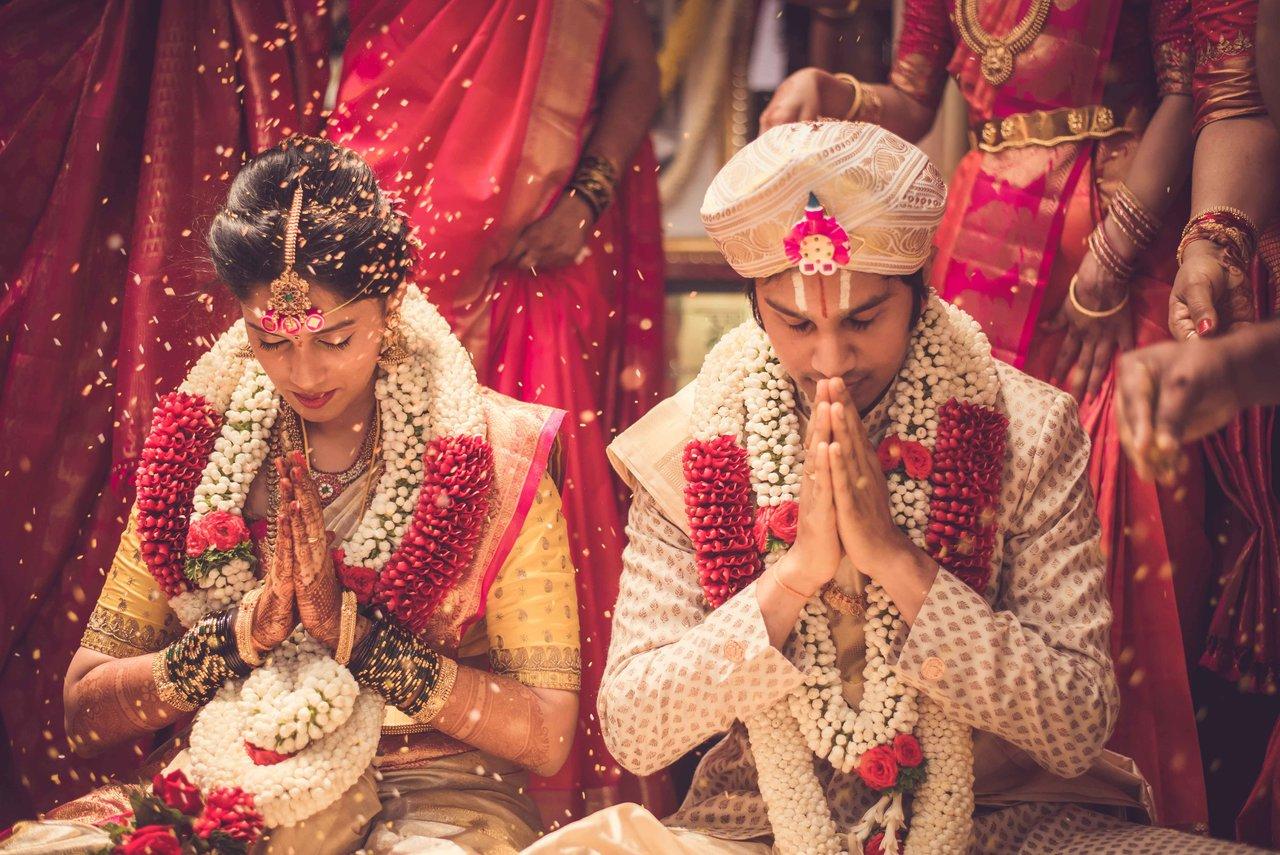Everyone has heard about the pomp and fervour of Indian weddings. But things are quite different down south, where the loud celebrations are replaced by peaceful, solemn rituals. Tamil weddings are no different.
While Tamil weddings generally last one day, the final wedding ceremony is a culmination of various rituals and traditions. As a result, orchestrating all these events can leave one’s head spinning! If you are in a position where you have to plan a Tamil wedding ceremony, this post will help you stay on track!
Here’s a Step-by-step Guide for Planning the Perfect Tamil Wedding Ceremony:
Fixing the Budget
Even the quaintest of Tamil wedding ceremonies can be an expensive affair. Hence, the first course of action would naturally be to set aside a budget.

Traditionally, the bride’s family is responsible for footing the wedding bills. However, as we embrace a more progressive outlook where we find matches through Tamil matrimony apps and sometimes skip the nakshatra porutham, this trend has also changed. Now, it is more common for the bride and groom’s families to come together and openly discuss the financial liabilities and share them equally.
Once the budget is set, you should make all efforts to honor it.
Meet Vendors and Collect Quotes
Once the budget is ready, it is time to shortlist all the vendors and meet them. The quotes from vendors will offer you a broad overview of the number of guests that you can invite and so on.
Of course, if you involve an event planning company here, they will cut through this hassle through their bundled packages.
Preparing a Guest List
After matching up your budget against the estimated cost per guest, you may have arrived upon a feasible number of guests.
This phase of the wedding planning requires some collaborative action from the bride and groom’s end. Start big by including everyone you wish to invite, from your primary school teacher to a mutual office colleague – add them all to the list. Now comes the messy part – weeding out your guest list.
Get realistic about the number of guests you can admit to the event and categorically strike out the ones you cannot invite. It would be best if you followed a standard cutting rule that applies to both parties. Simple rules like “They are not related, and neither of you has talked to them in the past three years” will help you remove the non-essential guests.
Shortlisting the Venue

Now that you have taken care of the most mammoth task – preparing a guest list. You can go about seeing and shortlisting the venue. You can choose the venue depending on the theme you wish to have at your wedding. In the event that you are hosting a few common ceremonies, such as the Nandi Shraddham/ Mappillai Azhaipu or Oonjal at the wedding, make sure that the venue can cater to these rituals in terms of space and material.
Creating a Schedule
Tamil weddings are well-known for their elaborate set of traditions and rituals. Depending on your community, you may have all or some of the following ceremonies:
Pre-Wedding Events
- Nakshatra Porutham – matching the horoscopes of the bride and groom.
- Lagna Pathirikai – fixing the marriage between the couple and deciding the wedding date.
- Panda Kaal Muhurutham – worshipping the kula devata (ancestral deities) and praying for a successful wedding ceremony.
- Sumangali Prarthanai – where the sumangali women (married women) bless the bride.
- Pallikal Thellichal – ushering in good luck.
- Vrutham – marking the groom’s transition from bachelorhood to domestic life.
- Naandi Shraddham/Mappillai Azhaipu – welcoming the groom’s family to the bride’s home.
- Nishchayathram – showering the bride and groom with gifts from their respective in-laws.
- Kudimagan – inviting the guests at the wedding.
Wedding - Mangalasnanam – applying turmeric, sandalwood, and vermillion to the bride and groom, and bathing them in holy water.
- Gauri Puja – worshipping Goddess Gauri and praying for a happily married life.
- Kashi Yatra – reminding the groom of his obligations as a married man.
- Pada Puja/Vara Pujai – washing the groom’s feet with milk, holy water, sandalwood, and vermillion, then drying them with flowers.
- Maalai Maatral – exchanging of garlands.
- Oonjal – rocking back and forth on a swing.
- Kanyadaanam – where the bride’s father gives away his daughter to the groom.
- Saptapadi/Thali Kattu – solemnizing the wedding.
- Ammi Midhithal – where the bride treads on the grindstone.
- Poo Manam Choridhal – blessing the newlyweds.
Post-Wedding Events
- Sammandhi Maryathai – exchanging of gifts between the bride and groom’s families.
- Mana Pen Solli Kolluthal – where the bride bids adieu to her family.
- Grupravesha – welcoming the bride to the groom’s home for the first time.
- Kalyana Virandhu/Reception – throwing an extravagant feast to seek blessings for the newlyweds.
Naturally, you will have to earmark the dates for the respective ceremonies depending on the muhurutham.
Finalize the Orders

With a few weeks left for the wedding, you may find greater clarity on everything that is essential versus the things that you can let go of. So now is the time to finalize everything and make all the bookings. The key things that you need to take care of are:
- Holy priest
- Manavarai stage booking and decoration.
- Traditional instrumentalists
- Gifts for everyone
- Pooja supplies, such as coconuts, flowers, banana leaves, silver thaali, earthen pots, etc.
- Hair and makeup artists
- Wedding photographers
- Wedding cake
- Vegetarian caterers
Book these well in advance to avoid any last-minute fiascoes. If required, prepare a checklist to keep a track of these considerations.
Plan The Outfit
In addition to coordinating everything above, you also need to decide on your wedding outfit. And in this aspect, what you wear on your D-Day is not your only concern! You must also prepare for other rituals and ceremonies. Once again, create a list of all the events and envision what you would like to wear then. Decide on the clothes as a couple so that you can wear complementary items even if you are not together.
Preparing a consolidated list of clothing and accessories cuts down the number of trips you will have to make to the stores. Also, if you need to take care of the fitting, hand over your clothes to the tailor with enough margin to account for any contingencies!
Recommended Read:
- 21 Stylish And Beautiful Indian Hairstyle For Saree
- 30+ Stylish and Elegant Finger Mehndi Designs
- Celebrity Poses In Saree For Photography Ideas
- 50+ Pattu Saree Blouse Designs To Rock Your Desi Bridal Look









